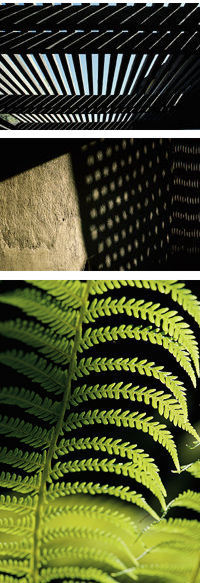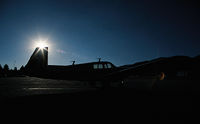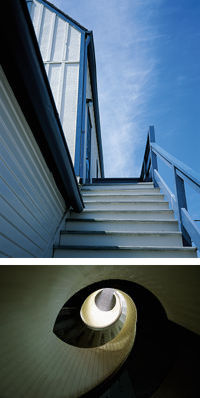10 Fun Self-Assignments
 Here are 10 ways to get your creative juices flowing . . . and some great photos
Here are 10 ways to get your creative juices flowing . . . and some great photos
1. Discover Your Own Backyard
If you put your mind to it, you can find lots of neat photo subjects right in your own backyard. (If you live in an apartment and don't have a formal backyard, don't worry—this assignment is about discovering photo subjects around your abode—they don't have to be in an actual yard.) The key here is to ignore your preconceived notions about what you see. Don't look for "things" to shoot; look for colors, patterns, lines, shapes, and the interplay between light and shadow, instead. You'll be pleasantly surprised at what you can find.
You can find lots of great photo subjects around home if you keep your eyes open, and look for colors, patterns, lines, shapes and the interplay between light and shadow. Top and middle by Mike Stensvold, bottom by Lynn Eodice
 2. Learn a New Lens
2. Learn a New Lens
One of the best things about a 35mm SLR camera is the fact that you can remove the lens that's on it and replace it with a different one. This gives you access to a wide range of lens focal lengths. But you don't need an interchangeable-lens SLR for this assignment: a zoom compact gives you a range of focal lengths—albeit a somewhat limited one—to play with.
If you generally use a "normal" lens, try a wide-angle or telephoto. Move in close with a wide-angle lens, and you'll expand perspective; move back with a telephoto, and you'll compress it. Zero in on details with a macro lens. If you generally use a wide-angle lens, try a telephoto. If you prefer telephotos, try a wide-angle. If you generally shoot from afar, move in close. The purpose of the exercise is to get you to see things in a way you generally don't.
Telephoto lenses let you zero in on details from afar. Bottom: Move in close with a wide-angle to expand perspective. Photos by Mike Stensvold
 3. Examine Textures
3. Examine Textures
Many objects have interesting textures, and these can make for interesting photos. The secret is to use strong sidelighting, which emphasizes texture and three-dimensionality (although backlighting can be effective, too). If the subject is three-dimensional (i.e., it isn't flat), stop the lens down to increase depth of field.
Bottom: Light shining across the surface of a subject emphasizes the texture. Here, the midday sun provided cross illumination for the vertical surface of a corroding tank. Top: If the subject is three-dimensional, cross lighting will emphasize that, too—but don't forget to stop down to increase depth of field. Photos by Mike Stensvold
 4. Star Power
4. Star Power
You don't need a star filter to put stars in your photos. Just stop a wide-angle lens all the way down, and include the sun (or other point light source) in your image. The tiny aperture diffracts the point light source into a star shape. (Caution: Don't try this with a longer lens—eye damage will result if you look at the sun through a telephoto lens.)
Here's one example: The photographer knew that shooting into the sun with a wide-angle lens stopped down to a small aperture would turn the sun into a "star." So he knelt down to turn the sun star into a "strobe light" on the tail of the airplane. Photo by Mike Stensvold
 5. Stairways
5. Stairways
Stairways are fascinating. They lead somewhere—somewhere above our everyday world, or somewhere below it. They also make great photo subjects. Take your camera out, find some stairways, and see what you can do with them photographically. You'll probably find wide-angle lenses most useful, but try diffeent focal lengths. Move close, move back, shoot from the bottom looking up and from the top looking down, experiment with framing, and maybe include a person (or several).
Stairways can lead you to interesting photos. Keep your eyes open for photographic possibilities, and for the steps—you don't want shots taken while falling down the stairs! Photos by Ron Leach








































